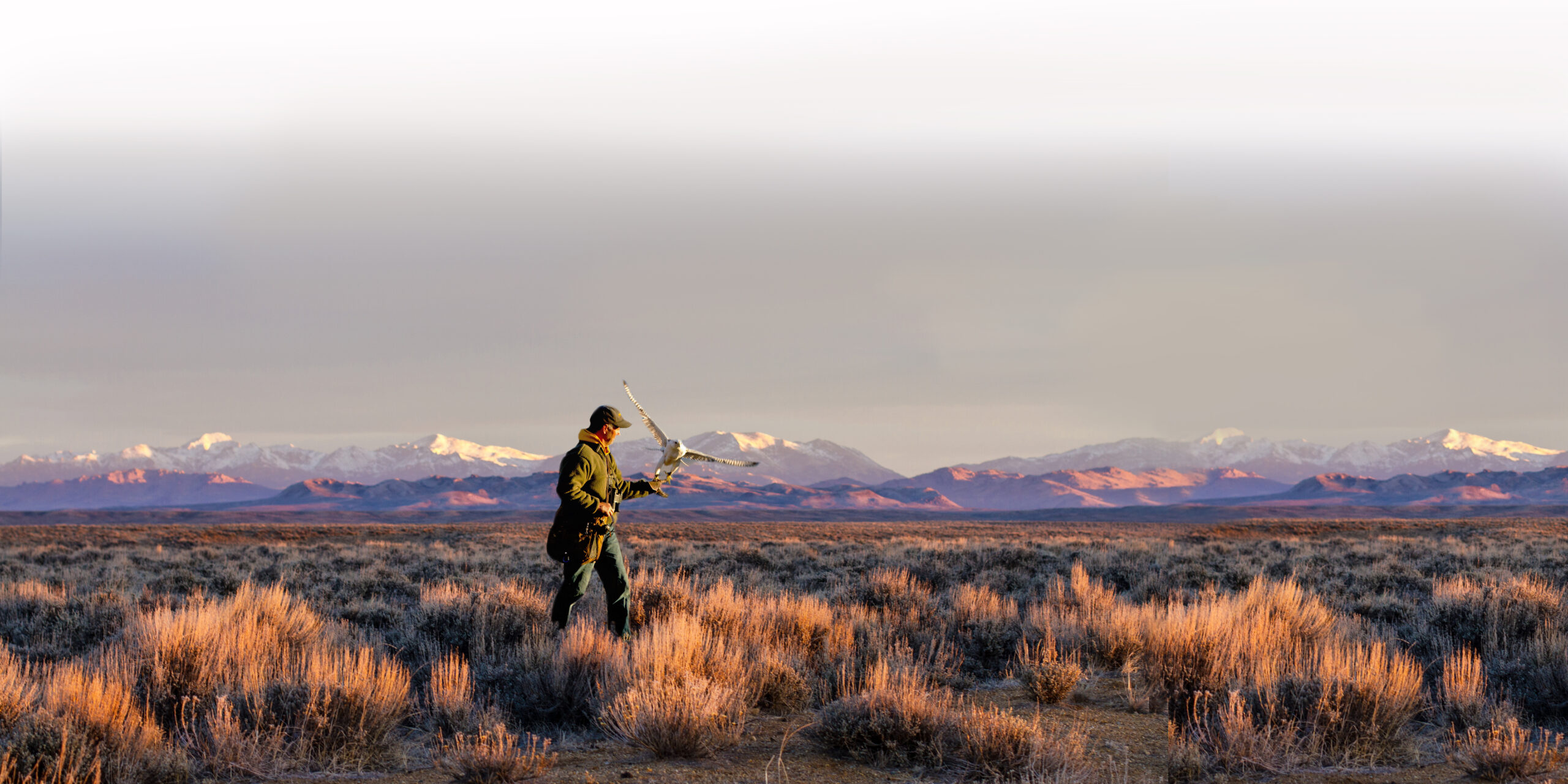Falconry and Conservation

As have our fellow hunters and anglers, falconers have supported modern wildlife conservation and biological research. The Peregrine Fund, McGill University and the University of Saskatoon, whose sustained efforts with unprecedented partnerships in the private and public sectors led to the recovery of wild peregrine falcon populations in North America. The founders of these organizations included committed citizen conservationists, the majority of whom were also falconers. The ranks of contemporary falconers include many distinguished and world respected conservation biologists.
Contemporary efforts to confront threats to raptor populations and their critical habitats are supported by falconers around the world, including efforts to increase nesting substrates and reduce electrocution threats to sakers in Mongolia, and golden eagles in North America.
The richness and diversity of wild nature, upon which the future of falconry depends, faces new threats and challenges daily. The falconry community cannot rest on past laurels. Falconers must continually respond to these challenges if this ancient yet modern life-way is to continue in perpetuity.
PURPOSE: To improve or foster protection of wild raptors and quarry species and their habitats the wild viability and captive propagation of species and native habitats essential to the practice of falconry.
PLANNED ACTIVITIES:
- Contributions to “Project Goshawk”. Project Goshawk is not about “proving” that there are a lot of goshawks but rather we want to be at the fore-front on goshawk research and conservation. The Ontario Hawking Club is discussing how to better leverage and finesse the current available data, which has been collected over the past several years. They are pursuing ways of fine-tuning this information so that it can be leveraged into more meaningful data with a variety of applications. They are discussing a research proposal with Dr. Brad Fedy at UW and Dr. Lynn Oliphant, and they are in communication with other goshawk searchers/falconers in New York and Pennsylvania to share information and discuss opportunities for joint research.
- Contributions to the tracking of rehabilitated Golden Eagles using satellite telemetry. Every year hundreds of young starving eagles are admitted to raptor rehabilitation centers. Since April 2018 Jamaica Smith has been working, training and hunting with a rehab male golden eagle (named Spinner) – all in an effort to eventually release him back into the wild. At first Spinner struggled to fly but after many months of hard work he is now a very abled flier and is ready for release back into the wild. The Falconry Fund provided funding to help purchase a satellite transmitter so that movements of eagles, like Spinner, can be followed once they are released.
- Engage in conservation partnerships to providinge organizational support tofor ongoing research relevant to falconry raptors used in falconry, preyquarry species orand their habitats
- Improve or protect the viability of wild raptor and game species necessary for falconry, especially those deemed by science to be threatened with extinction or in danger of becoming so
- Support the development of vaccines orand other medical interventions to protect falconry raptors employed in falconry from disease.
- Support captive propagation efforts by private and public entities for raptor or game species used in falconry
- Conserve wildlife habitats essential to falconry, Effect through fee title purchase, conservation easement, orand other means. the conservation of habitats necessary for viable raptor and game species necessary for falconry
- Support efforts to protect our federal public lands in the western United States, which include by far the large majority of sage grouse habitat and populations, and thousands of square miles of rabbit and jackrabbit habitat critical to the future of falconry.
- Support research in conservation biology which helps assure the future of wild raptors and quarry (or game) species.
-
Study habitats necessary for healthy raptor populations

